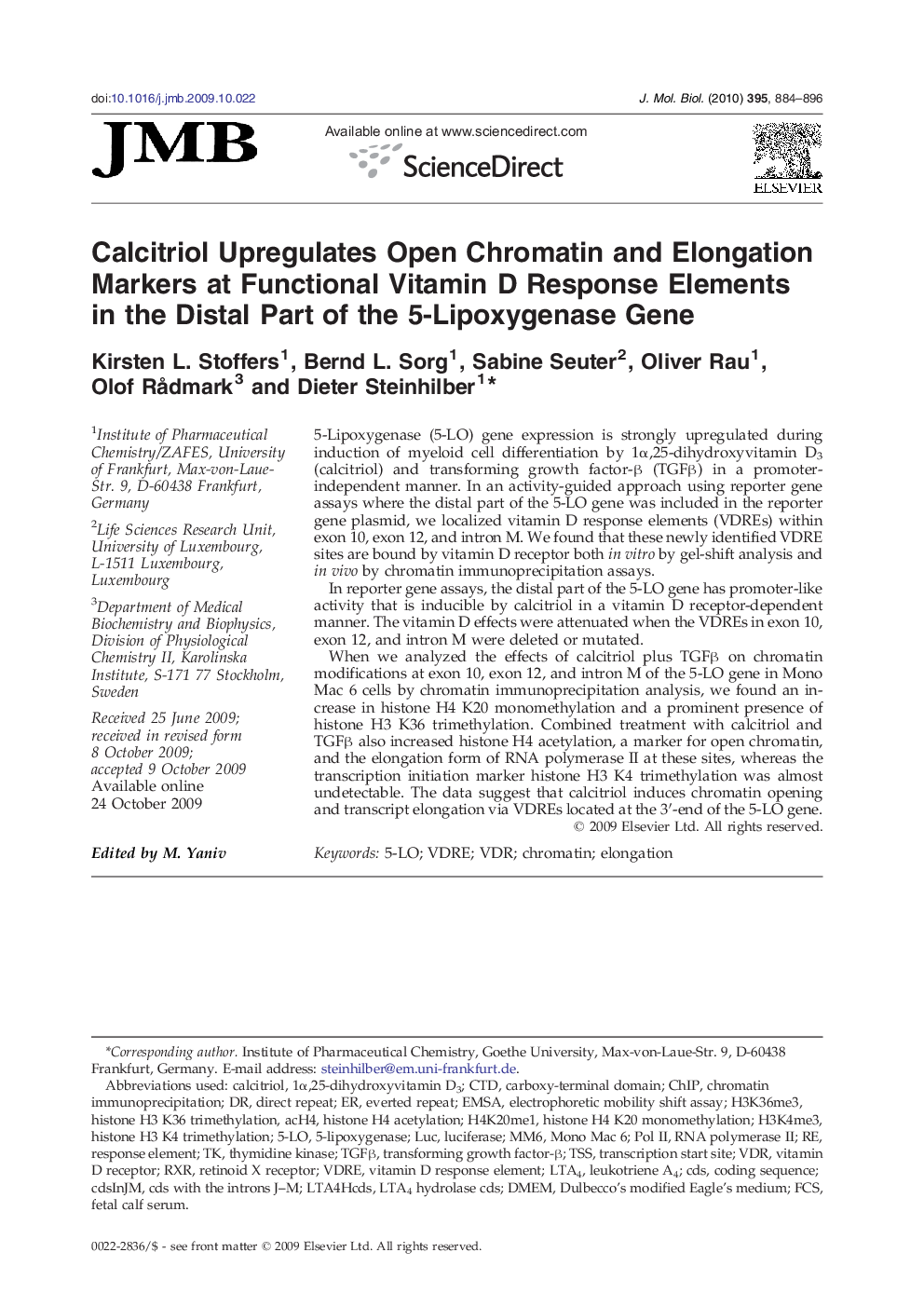| Article ID | Journal | Published Year | Pages | File Type |
|---|---|---|---|---|
| 2186086 | Journal of Molecular Biology | 2010 | 13 Pages |
5-Lipoxygenase (5-LO) gene expression is strongly upregulated during induction of myeloid cell differentiation by 1α,25-dihydroxyvitamin D3 (calcitriol) and transforming growth factor-β (TGFβ) in a promoter-independent manner. In an activity-guided approach using reporter gene assays where the distal part of the 5-LO gene was included in the reporter gene plasmid, we localized vitamin D response elements (VDREs) within exon 10, exon 12, and intron M. We found that these newly identified VDRE sites are bound by vitamin D receptor both in vitro by gel-shift analysis and in vivo by chromatin immunoprecipitation assays.In reporter gene assays, the distal part of the 5-LO gene has promoter-like activity that is inducible by calcitriol in a vitamin D receptor-dependent manner. The vitamin D effects were attenuated when the VDREs in exon 10, exon 12, and intron M were deleted or mutated.When we analyzed the effects of calcitriol plus TGFβ on chromatin modifications at exon 10, exon 12, and intron M of the 5-LO gene in Mono Mac 6 cells by chromatin immunoprecipitation analysis, we found an increase in histone H4 K20 monomethylation and a prominent presence of histone H3 K36 trimethylation. Combined treatment with calcitriol and TGFβ also increased histone H4 acetylation, a marker for open chromatin, and the elongation form of RNA polymerase II at these sites, whereas the transcription initiation marker histone H3 K4 trimethylation was almost undetectable. The data suggest that calcitriol induces chromatin opening and transcript elongation via VDREs located at the 3′-end of the 5-LO gene.
